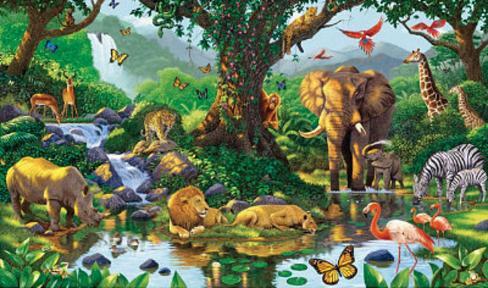Archives of “Zoology” tag
rssThe fastest animal. Peregrine falcons defies terminal velocity; sky dives at over 200 miles per hour to kill prey
In Trading :Money is the score card, but the performance engine is love of the game.
One of the great challenges of trading is that it requires intense and singular concentration on markets, but also an equal focus on one’s performance in those markets. That combination of market awareness and self-awareness enables traders to make the most of their “edges” in markets while also cultivating fresh sources of edge.
It is interesting that very successful traders usually don’t achieve monetary success and then walk away from markets. That is because what drives them is not just the outcome, but also the process: the ongoing challenges of market mastery and self-mastery. Even after the money has been made, the game retains its appeal.
If your motivation is primarily to make money, you probably won’t get to the point of career success, because the inevitable periods of drawdown will sap whatever drive is present. When the motivation is mastery, losing periods provide fuel for reflection, learning, and improvement.
10 Types of Trading Animals:Which Are You?
 The Bear- This trading animal believes the market will be going down and plays the short side. Bears think that a market is going to be very red.
The Bear- This trading animal believes the market will be going down and plays the short side. Bears think that a market is going to be very red.
The Bull- This trading animal is very optimistic that the market will be green. Bulls love to buy and believe their screen will be full of green.
The Whale- This trading animal can move prices when it buys and sells. The whale has to faze into positions and out of them so it does not make big enough waves to attract piggy backers. A lot of money can be made trading along side the right whale.
The Pig- This trading animal likes to trade big and often. The problem is that the pig does not know how to exit a winning trade he usually has too big of a target, too big of a position size, and too big of a time frame.
The Shark- This trading animal is just about making money, it gets into trades, makes money and gets out. It has little interest in big complicated theories or esoteric methods. The shark keeps it simple it makes money then moves on to the next opportunity. (more…)
Lessons from Lobagola
[A LoBagola, as described in The Education of A Speculator
by Dr. Niederhoffer, is a phenomenon whereby a market makes an
historically large run in one direction, usually up, and then at some
unpredictable point begins an equally extreme run back to where it
started.]
1. The pace of the elephants on the way down set the underlying conditions for the reversal. The expectation studies must include the number of failed reversal attempts, as well as the usual measures.
2. In actual migrations, elephants selectively eat trees/plants without killing them, the plants re-grow and the elephants eat them on the reversal (coppicing effect). Hence, elephants are able to use the same migration route because they know that the resources in these areas will be available to them. In markets, the footprint of the move can be observed in the patterns of time and volume and untouched bids and offers.
3. The most difficult part of trading lobagolas is: “nobody knows when they come back”. Qualitative observations about the nature of the migration might help. There are two main causes for elephant migration: resources and human intervention, the latter also is known to be able to change the path of the elephants. Some classification studies (not retrospectively) in market moves is appropriate. (more…)

